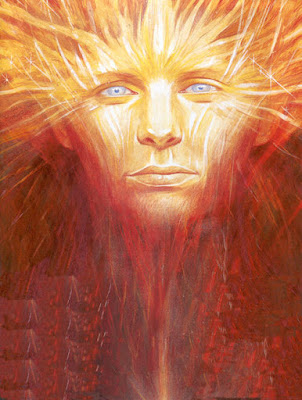HIST & MYTH: Lugh - God of Many Roles
Written by Ben Kesp.
Lugh is certainly a powerful deity in Irish mythology and has earned his name as the god of skill, talent and later became known more as the God of Light or Solar God similar to the Greco-Roman God Apollo. Storm God is another of his roles and it’s often mentioned in Ireland in County Mayo that during a thunder storm, Lugh and his grandfather Balor are battling in the skies overhead.
The tale of his birth tells us that his mother Ethlinn was imprisoned in a tower on Tory Island off the north coast of Ireland by her father Balor, ruler of the mighty Fomorians, a race of giants and enemies to the Tuatha Dé Danann (Irish Gods). His reasons for doing this act was so that his daughter would never lay eyes on a man, as Balor feared a druid's prophesy that one day his grandson would kill him. However Cian, the son of Dian Cécht, God of Healing and Health of the Danann, heard of the trapped princess, and with the help of Biróg, a fairy woman, she transports him to the tower where he seduces Ethlinn. Ethlinn gives birth to triplets and Balor has the babies gathered in a sheet to drown however one survived by falling from the sheet and is saved by Biróg.
Lugh had many weapons associated with him, even though he is not the God of War, that role falling to Néith, son of the Dagda. Lugh’s weapons included a magic spear, one of the four magical treasures brought by the Danann to Ireland. It flashed fire and tore through enemy ranks obliterating all before it. The spear is often associated as a lightning rod. Other weapons include sling stone, sling rod, magic boat and a hound.
Many major events are associated with Lugh, including the Assembly of Talti, games similar to the Olympic Games held on the 1st of August in honour of his foster mother Tailtu at the present day town of Teltown in Co. Meath. These were held on a complex of ancient earthworks dating from the Iron Age. The Lughnasagh fairs in honour of Carmen and Nás, the goddesses of the region with the town of Naas deriving its name from Goddess Nás. All of the events and fairs included horse racing and martial arts. In 1922, the newly formed Irish Government debated to revive the ancient Assembly of Talti Games and a similar sporting festival took place in the years of 1924, 1928, and 1932, open to anyone of Irish ancestry. The new games also included motor racing, shooting and chess. Alas, the games did not continue and the intention to surpass the Olympic Games was but a dream. Lughnasagh is a celebration of Lugh and in present times it’s more associated with the time for the harvest. Celebrations are still ongoing today with the Catholic Church incorporating it as a day for blessing the fields. In the Irish language, the month of August is Lúnasa securing Lugh’s legacy.
In Irish myth, Lugh saved the Danann at the Second Battle of Mag Tuired defeating the oppressive rule of the Fomorians and banishing the giants into the seas, never to rule Ireland again. As Balor’s prophecy had foretold, Lugh killed his grandfather by casting his spear into Balor’s evil eye striking him dead. During the same battle, Lugh came upon the defenceless Bres who begged for his life in return for granting a harvest each year and informing the Danann when to sow the crops, securing his place as the God of Agriculture.
The Romans were also aware of the importance of Lugh believing most cultures worshipped the same gods by using different names. In Julius Caesar Gallic War Essays he makes references to the God of Mercury which he actually attributes to Lugh.
Like the Dagda, Lugh has certainly transitioned from the times of old into Christianity and to the modern world where his name is still associated with annual celebrations. Many of Lugh’s former shrines and places of worship have disappeared, replaced by Christian sites like Tynagh in Co. Galway and Croagh Patrick in Co. Mayo.
The next time the thunder rolls over head perhaps its Lugh in his constant battle with Balor to drive him out of the lands of Ireland!



Comments
Post a Comment